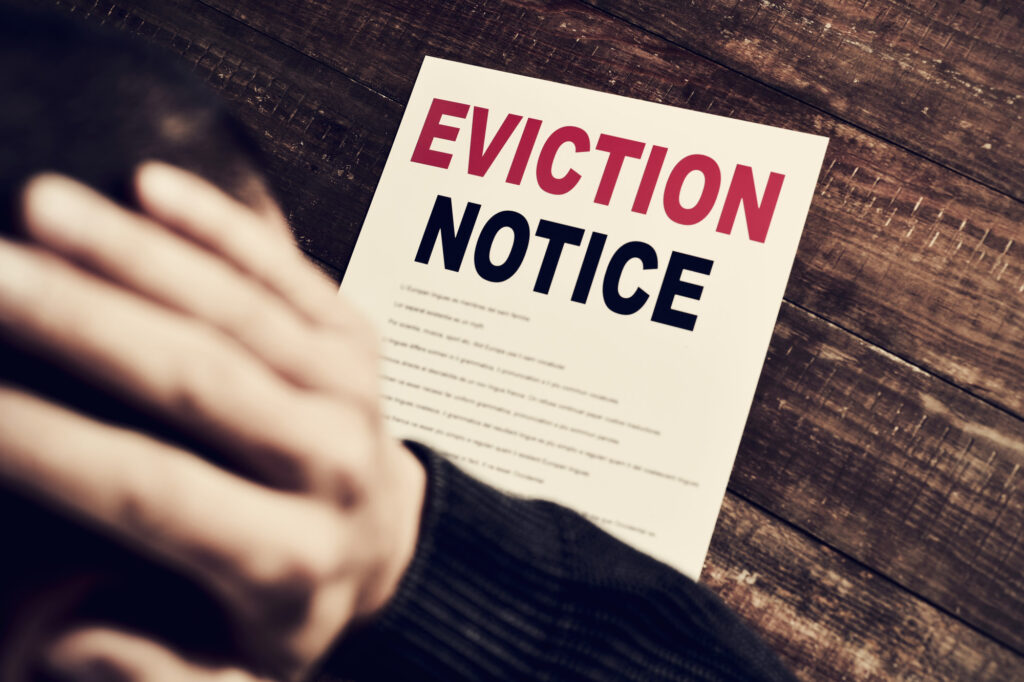How to Evict a Tenant from You Rental Property
Are you a landlord? Have you reached the point where you need to think about tenant eviction?
No one likes to evict a tenant. There are, however, times when it’s necessary.
If your tenant is failing to pay their rent on time, causing property damage, breaking things, and/or creating safety hazards, it’s time to begin the eviction process.
Here’s how you can go about evicting a tenant safely and legally.
1. Have a Conversation
No one wants to start the eviction process, and it’s good to avoid it if you can.
Start by having a direct conversation in a firm but respectful way. Let them know that you empathize with them personally, but that you need someone who’s a good tenant.
Tell them what an ideal tenant looks like. You need someone who can pay their rent and be respectful of your property.
You’ll also want to let your tenant know what the consequences are if they get evicted. They could get sued for past-due rent and even have their wages garnished. It could also affect their credit score.
Let them know that they can avoid the eviction by either moving out or paying their rent, including any past-due rental fees. Then leave the decision up to them.
2. Don’t Act Without a Court Order
It’s illegal in any state to act without a court order.
While it may be tempting to “self-evict,” resist the urge to take matters into your own hands. You can’t remove their things, change the locks, or lock out the tenant. It’s also illegal to shut off their utilities or make the tenant’s dwelling hazardous.
3. Make Sure You’re Reason is Lawful
You’ll want the judge to be sure that you’re a law-abiding citizen before you make a case for eviction.
Your reason will need to be legal. This includes failing to pay rent, significant damage caused to the property, breaking noise ordinances, or causing health hazards.
4. Issue a Formal Eviction Notice
There are three basic types of termination notices that landlords issue.
A pay-or-quit notice gets issued when a tenant hasn’t paid rent. It gives tenants a 3 day notice, 4-day notice, or 5-day notice to move out if they can’t come up with the rent.
A cure-or-quit notice doesn’t usually have to do with rent. It’s more for taking care of breaches of the agreement you signed when you leased.
This may mean you brought in a pet when you agreed not to or ruined an appliance when you agreed to keep the property in good repair. The tenant will be given a certain amount of time to correct the infringement in order to avoid eviction.
Finally, they may be given an unconditional quit notice. These give the tenant no opportunity to pay the rent or cure the problem. In most states, these are only allowed if there have been repeated violations or serious property damage.
Your eviction notice should get taped to your tenant’s front door, as well as sent certified mail. Make sure you get a receipt. To be sure your message is clear, spell out the amount owed, and the deadline for paying or moving out, on the eviction notice.
5. File Your Eviction in Court
You’ll need to visit your local courthouse to file the eviction and pay a fee. The court will then schedule you’re hearing. They will also notify the tenant on your behalf through a summons.
Chances are that you’ll need to provide proof that you gave notice with an appropriate amount of time for your tenant to pay the rent. Often, you’ll just need to provide a receipt from certified mail.
6. Attend the Court Hearing
You’ll want to do a little homework before you attend the court hearing. Make sure you have the necessary documents so that the process can get completed quickly and efficiently.
Make sure you have copies of any lease agreements, bounced checks, and records of any communications between you and your tenant. Be sure to document any conversations you had with them.
You’ll also want to keep a record of any payment that actually took place, as well as a copy of any notice you provided your tenant. You’ll also need proof that your tenant received the notice. This can be in the form of a receipt from the post office.
7. Complete the Eviction
If the court hearing goes in your favor, your tenant eviction will get approved and your tenant will be given a certain amount of time to leave. It may be two days or a week.
If your tenant still refuses to leave, a representative from the sheriff’s office can escort them out and bring their possessions to the sidewalk.
8. Collect Overdue Rent
If your court allows it, you may be able to sue your tenant for any rent that’s past due at the same time you file an eviction notice. If it isn’t allowed, you’ll have to file a separate lawsuit in a small claims court.
If the judge rules in your favor, your tenant’s employer can be forced to garnish your tenant’s wages. They can also garnish their tax refund or turn it over to a debt collection company. These companies can also inform credit bureaus and future landlords will be made aware of the situation.
When It’s Time to Evict a Tenant
No one likes to evict a tenant. With the right steps, however, you can complete the eviction quickly and efficiently. Then you can look for a good tenant who will keep the rent coming in and your property in good repair.
Don’t stop improving your lifestyle now. For more great living advice, read our blog today.
